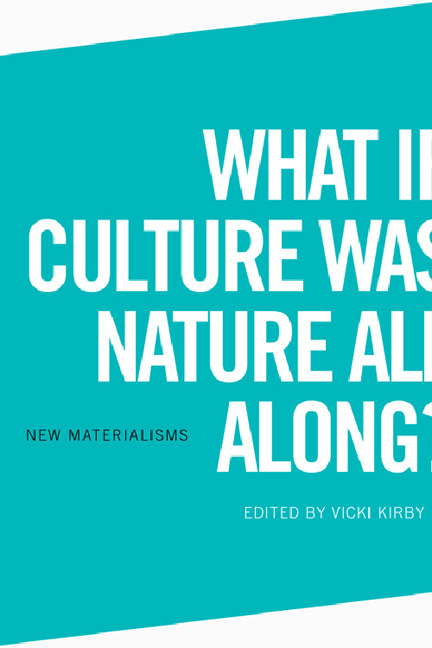Book contents
- Frontmatter
- Contents
- Acknowledgements
- Foreword
- 1 Matter out of Place: ‘New Materialism’ in Review
- 2 Method Matters: The Ethics of Exclusion
- 3 Sensory Substitution: The Plasticity of the Eye/I
- 4 Allergy as the Puzzle of Causality
- 5 Pregnant Men: Paternal Postnatal Depression and a Culture of Hormones
- 6 Material Culture: Epigenetics and the Molecularisation of the Social
- 7 Racialised Visual Encounters
- 8 Microbiology as Sociology: The Strange Sociality of Slime
- 9 Nature Represents Itself: Bibliophilia in a Changing Climate
- 10 Climate Change, Socially Synchronised: Are We Really Running out of Time?
- 11 A Sociality of Death: Towards a New Materialist Politics and Ethics of Life Itself
- Notes on Contributors
- Index
7 - Racialised Visual Encounters
Published online by Cambridge University Press: 22 December 2017
- Frontmatter
- Contents
- Acknowledgements
- Foreword
- 1 Matter out of Place: ‘New Materialism’ in Review
- 2 Method Matters: The Ethics of Exclusion
- 3 Sensory Substitution: The Plasticity of the Eye/I
- 4 Allergy as the Puzzle of Causality
- 5 Pregnant Men: Paternal Postnatal Depression and a Culture of Hormones
- 6 Material Culture: Epigenetics and the Molecularisation of the Social
- 7 Racialised Visual Encounters
- 8 Microbiology as Sociology: The Strange Sociality of Slime
- 9 Nature Represents Itself: Bibliophilia in a Changing Climate
- 10 Climate Change, Socially Synchronised: Are We Really Running out of Time?
- 11 A Sociality of Death: Towards a New Materialist Politics and Ethics of Life Itself
- Notes on Contributors
- Index
Summary
The question of race is often approached as an epistemological problem, predicated on readings and representations of visible differences, such as ‘hair type, nose shape and skin colour’ (Alcoff 2002: 14). On this account, race is understood discursively, as ‘an ideology, a narrative’ (Saldanha 2006: 9). Importantly, in this line of inquiry, the seemingly neutral act of seeing is subjected to scrutiny. The practices of visual representation – ‘the King of the senses’ (Braidotti 2011: 107) – are considered to be crucial to the genesis of the modern human subject. For example, in her analysis of ‘the process of speciation’, Megan H. Glick argues that visual representation as a form of ‘ocular anthropomorphism’ entails ‘the dualistic movement between processes of racialisation and speciation’ (2012: 99). Similarly, drawing on a Foucauldian conceptualisation of the ‘Classical episteme’, Linda Martin Alcoff notes that Western fetishistic classifying practices which delineate and differentiate natural terrains and types, such as map-making and table-drawing, emerged simultaneously with the ‘metaphysical and moral hierarchies between racialised categories of human beings’ (2002: 13).
In reconfiguring what is taken as self-evidently visual in racialised and anthropocentric perceptual practices, the above accounts provide strong critiques against an ‘ocular consciousness’ (Glick 2012: 99), characteristic of the sovereign and disembodied human subject, coded as white and masculine. Moreover, the immediacy of phenotypes is now considered ‘a produced obviousness’ (Alcoff 2002: 14). In other words, the direction of essentialism's logic of causality is reversed, so that the visible racial differences are understood as the result of, rather than the cause and justification for, various forms of racism.
And yet we should not be surprised that, despite such interrogations, the visual registry continues to function as a powerful determinant, mediating everyday racialised encounters. As Alcoff writes,
the processes by which racial identities are produced work through the shapes and shades of human morphology, and subordinate other markers such as dress, customs and practices. And the visual registry thus produced has been correlated with rational capacity, epistemic reliability, moral condition and, of course, aesthetic status. (2002: 16)
- Type
- Chapter
- Information
- What if Culture was Nature all Along? , pp. 134 - 152Publisher: Edinburgh University PressPrint publication year: 2017



